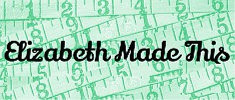Sorry, a lot of text today and not many pictures as I tend not to take many pictures while I’m fitting.
To review, a TNT=tried and tested pattern. Having a TNT in your pattern stash will allow you to quickly assess if other patterns will fit you as well as giving you a base to add any number of changes.
So you picked a pattern, how do you go about making it work for you? I’ll start with universal strategies and move on to different avenues that will get you to the same result (as we all learn differently).
Things that will help you perfect the fit of your t-shirt:
- A critical eye: In assessing fit, whether you tissue fit, progressively learn from projects, or muslin, you need to be able to take an honest look at the mirror and assess what is in front of you. It will take perhaps a lot of failure. It’s just part of the process. I’ve wiped away many frustrated tears trying to figure out fit. Figuring it out is worth every drop of pain it takes to get there. The alternative is to keep on feeling bad about yourself every time you go into a changing room, hoping that RTW will finally fit–but we all know that far more often than not RTW will not fit well.
- A mirror, possibly two or three:
In my sewing room, I have a long mirror and a vanity mirror that came with our bedroom set that we’ve never used behind it. Between the two mirrors, it’s easy for me to see every angle of a given garment. Sometimes I have to move my long mirror, but it’s lightweight and easy to do that. You don’t want to be twisting at all to see various things because whatever garment you’re wearing isn’t twisting in real life as it hangs from your body. You will want to assess it as it is, and a couple of mirrors will make that simple. Here’s a tutorial on making your own 3-way mirror. You could even simplify this by starting with 3 mirrors with wooden frames and just grab some hinges and the appropriate screws from Home Depot (shouldn’t more sewing projects start there?!).
- A friend (optional, but possibly extremely helpful): Friends aren’t always helpful when assessing fit. For when they’re not, I can’t more highly recommend Peggy Sagers’ Fitting Yourself By Yourself.
 There’s lots of really helpful advice in it and she really clearly shows you how to drape a garment (as she does on most of her webcasts and in person too). But let’s not dismiss the idea of using a friend to help you fit–she just needs to know what to look for. I’ve been fortunate enough to have a group of ladies to do just that. We all joined together to keep working on our pants after a class we took last year. The teacher took on what I think was too many students that day. In her inability to give us the individual time I think we needed, I think she just kind of applied a formula across the boards even though we were all clearly differently shaped (hello, I was like 7 months pregnant!). We meet once a month and bring garments that we’re working on in whatever stage they might be in. One of the ladies has taken a lot of Palmer/Pletsch classes and is on her way to being certified, so she’s rather knowledgeable about fit. Although I have had little success with P/P, it’s still great to have people to bounce ideas off of. Just sitting and talking about fit with all of these ladies has really helped me codify what I look for when I’m fitting myself.
There’s lots of really helpful advice in it and she really clearly shows you how to drape a garment (as she does on most of her webcasts and in person too). But let’s not dismiss the idea of using a friend to help you fit–she just needs to know what to look for. I’ve been fortunate enough to have a group of ladies to do just that. We all joined together to keep working on our pants after a class we took last year. The teacher took on what I think was too many students that day. In her inability to give us the individual time I think we needed, I think she just kind of applied a formula across the boards even though we were all clearly differently shaped (hello, I was like 7 months pregnant!). We meet once a month and bring garments that we’re working on in whatever stage they might be in. One of the ladies has taken a lot of Palmer/Pletsch classes and is on her way to being certified, so she’s rather knowledgeable about fit. Although I have had little success with P/P, it’s still great to have people to bounce ideas off of. Just sitting and talking about fit with all of these ladies has really helped me codify what I look for when I’m fitting myself.
As for specific ways to go about fitting and transferring those changes to your pattern, you have some options:
- Tissue fitting: Palmer/Pletsch is all about tissue fitting. I know a lot of people have success with this, and I can see the time-saving benefits it can afford. There’s a great video from Marcy Tilton fitting a t-shirt. Part 2 is here.
- Progressive project learning: Call this an extension of the “wearable” muslin. To an extent we all do this, but basically, in this way, you can just make up projects as you would normally and check out what you like and don’t like and change those things for the next time you make a project. Michelle of Cheap and Picky did this with rather comprehensively with pants a while back and if you go back through all of her pants posts, you can see how things progress. This can easily be applied to t-shirts.
- Muslin/draping: This is my chosen method. Basically, you just make up a garment in an inexpensive version of whatever you will use and do all of your changes on that and then transfer those to your pattern. The benefit of this is that you’re assessing fabric that is going to behave similarly to your fashion fabric. If you work out taking the wrinkles out of your muslin, you won’t have to worry about getting them out of your actual garment. It seems costly to do make something up in trial fabric, but if you’re shooting for a TNT, you will only have to do this once or twice, and once you’ve perfected the fit on your muslin, you won’t need to do this again. Also, consider that you can make a muslin in leftover fabric. Peggy Sagers again describes this method really well in Fitting Yourself By Yourself. At one point she did do a webcast on the same topic, but it looks like it’s not available on the replays. For specific t-shirt fitting, there’s also these webcasts from Peggy Sagers. T-shirts and French Darts, Fit Those Knits, and for help on sewing with knits in general Sew Knits with Ease. Peggy’s construction advice is golden. Golden.
Printed resources to help you fit your t-shirt and transfer changes to your pattern:
- Fit for Real People by Pati Palmer and Marta Alto–
the Palmer/Pletsch guide to any kind of fitting question you could have. It will walk you through tissue fitting and help you learn to assess garments.
- Fast Fit by Sandra Betzina–
I love this woman. She gives you a lot of options for fitting any given area of your body, and her steps are clear and comprehensive.
- The Complete Photo Guide to Perfect Fitting by Sarah Veblen–
an excellent resource for draping with some other thoughts that you see in Fit for Real People and Fast Fit. She talks about a horizontal balance line in it, which is a really valuable concept. Lori interviewed Sarah on Sew Forth Now about the book here and here. In the first podcast, she explains the balance line. Do yourself a favor and listen to the podcast.
- Fitting and Pattern Alteration by Judith Rasband et al.
This is the seam method of pattern alteration. The idea is that you alter patterns where the problems are occurring rather than make a lot of changes that either cancel themselves out or cause problems elsewhere. I’ve had some success with this method and I certainly like the concept behind it. There’s a couple of earlier editions of the book, but the other ones only show you how to use the method on very basic styles, so it may not be obvious how to apply it to anything beyond a basic darted blouse. The edition I linked is pricey, but also extremely thorough in the styles it shows you how to alter.
Hopefully that will get you started with fitting a t-shirt pattern. As always, Patternreview is a wonderful community and resource when you’re in the middle of a project and are just plain stuck. I keep contributing to their site because it’s been so valuable to me. Browse around there if you never have, and I promise you will learn something.


One thought on “The T-Shirt Project: The search for your perfect TNT, part 2–Perfecting your pattern”